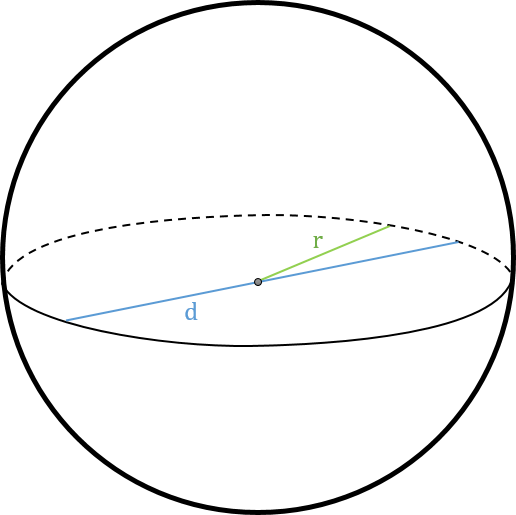In the quantitative aptitude section of all exams like banking, PO, IBPS, etc., mensuration is a heavily tested topic. Hence, it is important that all your concepts and formulas are well understood and remembered. Here we will take a look at the mensuration of a Cylinder, Cone and Sphere.
Suggested Videos
Cylinder, Cone and Sphere
Cylinder

We all have seen a cylinder, now let us learn to define it in technical terms. A cylinder is a solid figure, with a circular or oval base or cross section and straight and parallel sides. It is a closed solid figure with two circular bases that are connected by a curved surface. It can be said a cylinder is a limiting case of a prism.
Now if the generating line is perpendicular to the base, we call it a Right Cylinder. However, if one of the bases appears sideways, i.e. not perpendicular to the base then such a cylinder is an oblique cylinder. Now let us take a look at some of the important formulas,
- The volume of a cylinder = Area of the base × Height of the cylinder = πr²h
- Lateral Surface Area = Perimeter of base × height = 2πrh = πdh
- Total Surface Area = Lateral Surface Area + Area of bases = 2πrh + 2πr² = 2πr (h+r)
Another aspect of cylinders that we must learn is that of a hollow cylinder, like a pipe for example. Here the formulas will differ slightly. There will be two radii to keep in mind here, R of the outer cylinder, and r of the inner.
- Volume of Hollow Cylinder = Vol of External Cylinder – Vol of Internal Cylinder = πR²h – πr²h = π (R² – r²) h
- Lateral Surface (hollow cylinder) = External Surface Area + Internal Surface Area = 2πRh + 2πrh = 2π(R+r)h
- Total Surface Area (cylinder) = Lateral Area = Area of bases = 2π(R+r)h + 2π (R² – r²) h
Download Cylinder Formula Cheat Sheet Below

Cone
A cone is a solid three-dimensional geographical figure with a flat circular base (or roughly circular base) from which it tapers smoothly to a point known as the vertex or apex. So the cone is formed by a solid generated by a line, one end of which is fixed (apex) and the other describes a closed curve on a plane. Let us take a look at the formulas of a cone,
- Volume of a cone = \( \frac{1}{3} \) area of base × height = \( \frac{1}{3} \) πr²h
- Lateral Surface = \( \frac{1}{2} \) radius × arc length = \( \frac{1}{2} \) l × 2πr = πrl
- where l = slant height = √(r² + h²)
- Total Surface Area = lateral surface area + Area of base = πrl + πr²
Sphere

A sphere is a solid round three-dimensional figure, where every point on its surface is equidistant from its center. So all the radii of a sphere are equal. The best example of a sphere is a football, basketball, etc. And when a great circle bisects the sphere into two equal parts, they are the hemispheres. Let us see the important formulas.
- Surface Area of a Sphere = 4 times that of its great circle = 4πr² = πd²
- Volume of a Sphere = \( \frac{4}{3} \) πr² = \( \frac{π}{6} \) d³
Solved Example on Cone and Sphere
Q: Find the weight of a pipe with the following dimensions – exterior diameter is 17 cm, interior diameter is 15 cm and lenght is 1000 cm. One cubic cm of iron is 0.9 gms.
Ans: First we calculate the volume of the hollow cylinder (pipe)
Volume of Hollow Cylinder = Vol of External Cylinder – Vol of Internal Cylinder = πR²h – πr²h = π (R² – r²) h
R = 17/2 = 8.5 cms
r = 15/2 = 7.5 cms
h = 1000 cms
Vol of Hollow Cylinder = π (R² – r²) h = π (72.25 – 64.75) 1000 = 2346.19 cubic cms
Weight = Volume × density = 18849.53 gms







Leave a Reply